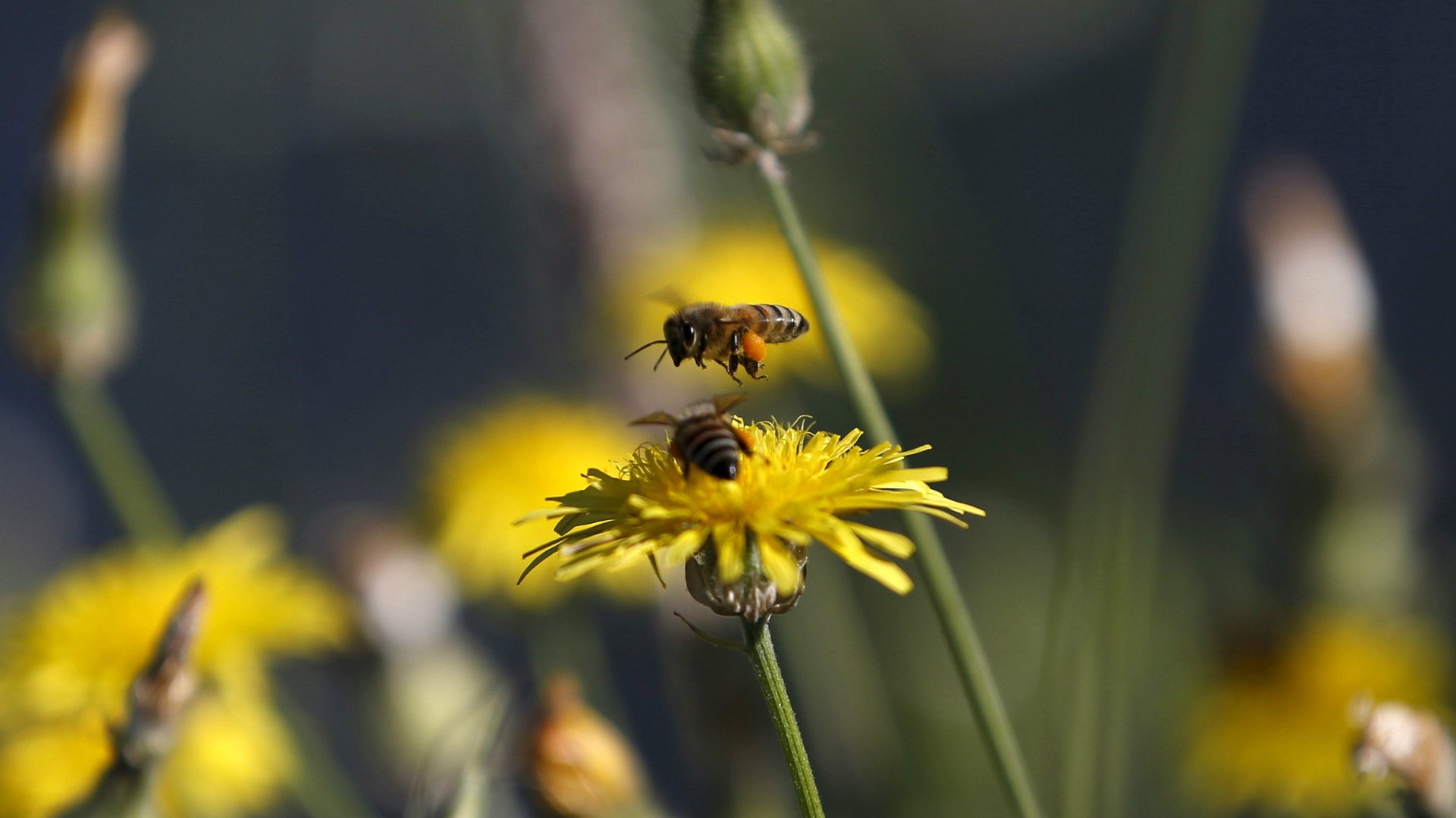More bad news for bees: This is going to be a rough winter
While you’re complaining about sub-zero temperatures this winter, just be happy you’re not a bee.


While you’re complaining about sub-zero temperatures this winter, just be happy you’re not a bee.
Despite recent efforts by the White House, the forecast for bee health this winter is not a good one, reports Agri-Pulse. In a blog post, Dick Rogers, the head scientist at the Bayer Bee Care Center in North Carolina, writes that his hive evaluations this year revealed ”the vast majority of hives contained mite infestations well above the threshold level of concern.”
Rogers is referring to the Varroa mite, one of several causes of a recent massive decline in honeybee populations. Mites are like bee vampires, sucking bees’ bloodlike fluid hemoplymph from their bodies and weakening their immune systems. While manmade problems like pesticide use and the loss of bee habitat are also linked to the pollinators’ falling numbers, Varroa mites are “public enemy number one,” as Keith Delaplane, director of the University of Georgia Honey Bee Program told Quartz in June.
Though winters are always challenging for beekeepers, this year will be even worse. Through his 30 years of experience, Rogers says he has identified a threshold level of three mites per 100 bees as a sign that “the colony is in trouble.” (A colony can easily have 40,000 bees, making that a lot of parasites.)
The US Department of Agriculture and the Bee Informed Partnership, he says, has confirmed his own recent findings, seeing a national infestation average of seven to eight mites per 100 bees, this year.
In the US, pollinators like bees and monarchs are responsible for an estimated $15 billion in crop value annually—a mite infestation could have devastating consequences on beekeepers, who need to restock their dying hives so they can continue pollinating.
While Rogers says that the commonly used treatment for mites isn’t quite working like it once did, he says scientists are working hard to bring new varroacides to market, while other researchers are trying to breed hardier bees that will tolerate the mites better. Those solutions, though, will not be immediately helpful.
“For now,” he writes, “there is little beekeepers can do to change the hand they’ve been dealt.”